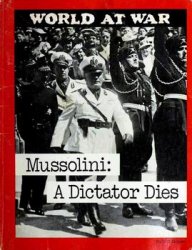After the bloodshed at the Battles of Lexington and Concord (April 19, 1775) and the formation of a New England army, the Second Continental Congress in Philadelphia began planning for a national force to assist with the deepening hostilities between Great Britain and her colonies. Because the New England defenders viewed their military struggle as one ultimately involving the protection of all the colonies against English aggression, they asked Congress to adopt the troops in Boston. This action would remove the impression that the conflict was merely regional and would broaden the base for military support.
On June 14, 1775, Congress took financial responsibility for the existing New England troops and authorized 10 companies of expert riflemen—though within a month this had swelled to 13—from other regions. The riflemen were the first troops raised specifically for the Continental army, with six companies from Pennsylvania and two each from Maryland and Virginia. Each was allotted one captain, three lieutenants, four sergeants, four corporals, one drummer or horn player, and 68 privates. The term of enlistment was for one year. Delegates from the respective colonies turned over recruitment responsibilities to county committees, with commanders of the new units generally drawn from the local gentry. Congress also approved an enlistment form and appointed a committee to draw up regulations for governing the army.
On the next day, June 15, 1775, Congress unanimously named George Washington commander in chief of all the forces raised in opposition to the British. Thereafter, Congress authorized various staff positions to assist Washington with the administration of the army. Since one of the issues in the conflict with Great Britain centered on the presence of regular British forces in the colonies, Congress and Washington had to be careful in their use of the Continental troops so as not to undermine belief in the adequacy of the local militia and create anxiety over a standing army. To ease those fears, Congress carefully stressed the defensive nature of its actions. The relatively small numbers of Continental troops to be raised and the short terms of enlistment were meant to bolster that position.
As the conflict widened and more companies were authorized, the army became a truly national institution. Washington, however, wanted to increase the professional standards of the army. He believed that militia units, which were increasingly called upon to reinforce the Continental troops, could not meet the British regulars on equal terms. Too often in the heat of battle the militia would run at the sight of the bright redcoats and shining bayonets. Washington wanted an army more like the British regulars and pressed Congress to lengthen enlistments so that he could retain experienced men. In the autumn of 1776, Congress agreed to three-year terms and allowed cash bonuses and postwar land grants as recruitment incentives. With longer enlistments and larger recruitment incentives, more men from the margins of society entered the Continental army. By the end of the war, the typical soldier was not an embattled farmer who owned property, because such men had too much to lose from long enlistments; instead, the typical soldier was poor, often young, often a recent immigrant, who owned little or no property.
The Continental army lost many battles in the early part of the war, often due to lack of resources and poor judgment within the officer corps. The arrival of Baron Frederick von Steuben and his Prussian military expertise at the Valley Forge encampment in the winter of 1777-78, however, brought discipline to the army. The drills and regulations von Steuben initiated gave uniformity to battlefield maneuvers, and their newfound precision instilled confidence in the men. The Continental army that marched out of winter quarters in June 1778 was a much more professional force. The army still lost some battles. But it was more capable of standing up to the British and Hessian regulars. The men in the army also suffered from poor and delinquent pay, pitiful provisions, and inadequate medical treatment leading to several mutinies of the Continental army. However, Washington managed to

Recruiting poster for the Continental army (Dover Publications)
Keep the army together. He avoided large battles in the northern theater for the rest of the war. The training and professionalization of the army paid off at Yorktown (October 19, 1781), which signaled the last major battle of the war. The final peace in 1783 rekindled concerns over a standing army. Not until June 1784 did Congress create a peacetime military establishment that was acceptable to all political factions, a small regular army led by Continental veterans and ordered by von Steuben’s regulations and drill manual.
Further reading: E. Wayne Carp, To Starve the Army at Pleasure: Continental Army Administration and American
Political Culture, 1775—1783 (Chapel Hill: University of North Carolina Press, 1984); Charles Royster, The Revolutionary People at War: The Continental Army and the American Character, 1775-1783 (Chapel Hill: University of North Carolina Press, 1979); Robert K. Wright, Jr., The Continental Army (Washington, D. C.: Center for Military History, U. S. Army, 1989).
—Rita M. Broyles




 World History
World History


![Road to Huertgen Forest In Hell [Illustrated Edition]](/uploads/posts/2015-05/1432477693_1428700369_00344902_medium.jpeg)






